You've probably already used a few Safari Extensions on your Mac, but if you haven't explored Safari's web extensions on your iPhone yet, you're missing out on some fantastic possibilities to increase productivity, make tasks easier, filter out noise, and bring more fun to your browsing experience.
Safari Extensions have been available on macOS (and Mac OS X before it) for over a decade, and with iOS 15 and iPadOS 15, Apple finally brought them to iPhone and iPad.
For the most part, they work on iPhone and iPad the same way they do on Macs, but there's still a lot to learn before you dive into using them in Safari. And numero uno would be that there are two main types of Safari Extensions for mobile devices: content blockers and regular extensions.
Jump to a section:
- Content Blockers vs. Regular Extensions
- See if You Already Have Some Safari Extensions
- Recommended Safari Extensions
- Find More Safari Extensions to Use
- Enable/Disable Safari Extensions
- Assign Permissions to Safari Extensions
- Manage Safari Extensions Per Site
- Know When Safari Extensions Are Active
- Delete Safari Extensions
Content Blockers vs. Regular Extensions
Content blockers have been around for iPhone and iPad since iOS 9, and if it wasn't obvious, you use them to block certain content from appearing on webpages in Safari. They're great for hiding unwanted elements and resources from loading on a page, and the result can even make your browsing speedier overall.
These types of web extensions can declutter the screen of social networking buttons, comments, navbars, sidebars, and other elements, but it's most helpful in identifying and blocking advertisements and analytics. Best of all, they cannot report any data back to their parent apps, so the developers of content blockers won't see what it blocks.
In iOS 15 and iPadOS 15, content blockers are now a part of Safari Extensions, along with regular web extensions. Standard extensions can change the appearance of a webpage, but they're more customizable, giving you more control over how Safari works. They can also change web content behavior, add buttons to perform actions without leaving Safari, and more.
For example, some functionality that web extensions can add to Safari includes activating cashback deals, finding coupon codes for products, checking your grammar and spelling, forcing a website to use a dark theme, switching search engines, opening up links in specific apps, and automatically redirecting AMP pages from a Google search.
See if You Already Have Some Safari Extensions
The chances are good that you already have some Safari Extension on your iPhone or iPad. A few of the apps on your device may have been updated for iOS 15 to include new tools to use directly in Safari, and it's easy to find out which apps those are.
Open the Settings app, tap "Safari," and open up "Extensions" under the General heading. At the top of the page, you'll see all of the content blockers you have installed and whether they're activated or turned off. Below those are the other types of web extensions. Any app you see listed has added some in-Safari functionality, and tapping one will show a brief description and what permissions it needs, and you can also toggle it on or off from here.
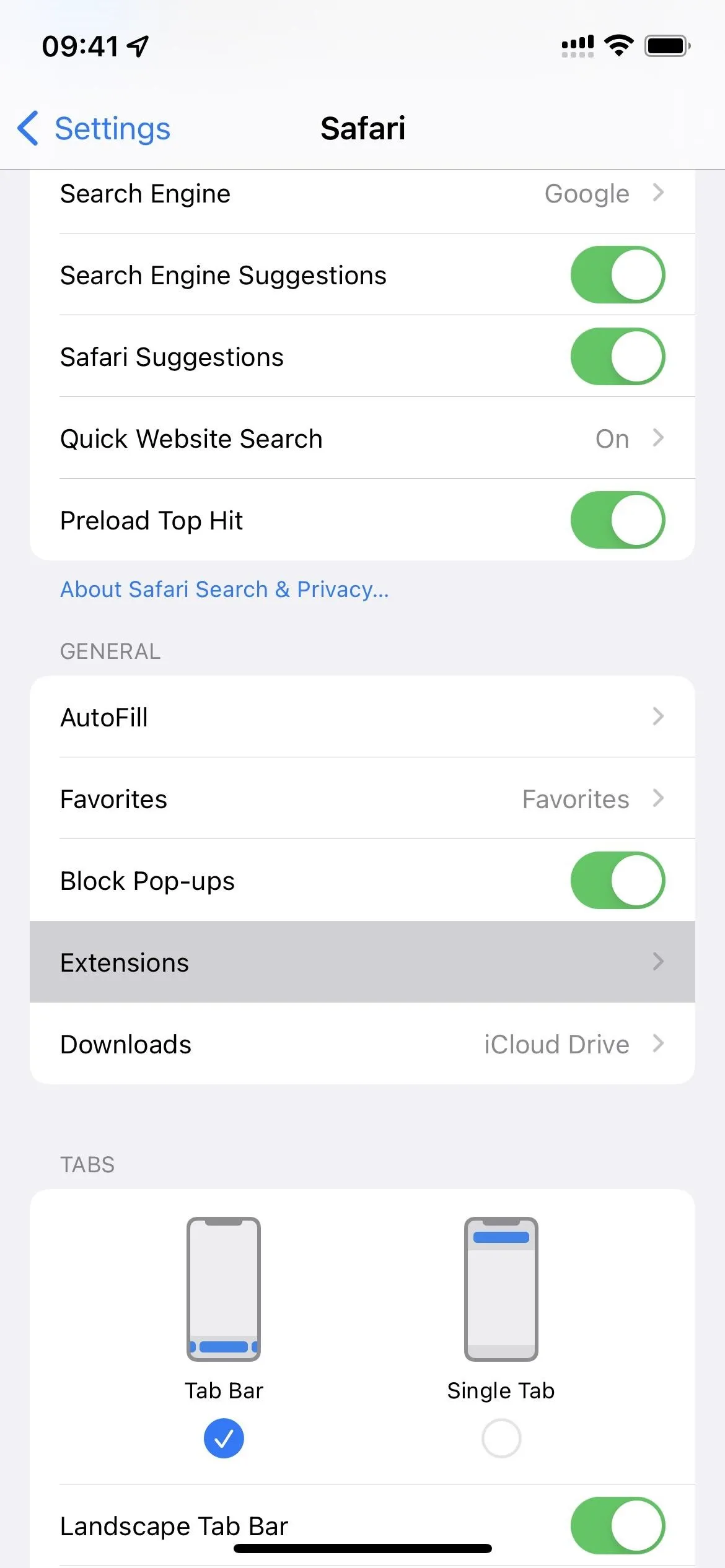

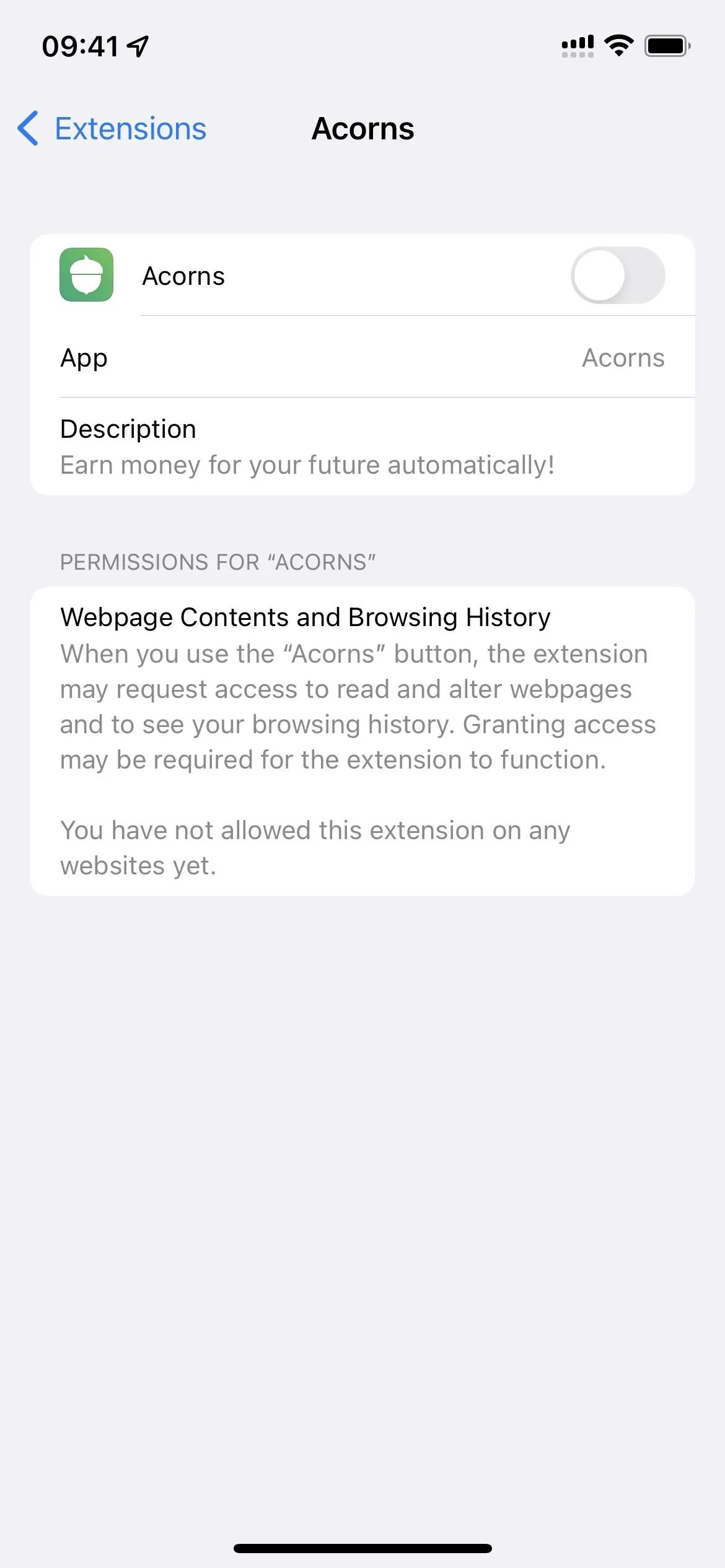



Recommended Safari Extensions
Before we dive deeper into using content blockers and web extensions, we have a quick list of popular Safari Extensions you can try out if you don't have any yet.
Content Blockers
- VPN by Private Internet Access: It can block ads, trackers, and malware with or without the VPN enabled. (Requires paid subscription; has a free trial.)
- Hyper Cleaner: Phone Storage: Lets you block advertisements, tracking scripts, social buttons, and known malware links. You can choose any of those or all of them. (Requires paid subscription; has a free trial.)
- Rekt: Block Nags, Redirect AMP: You can remove "use our app" banners and buttons as well as prompts to log in to web accounts for Reddit, Twitter, Facebook, Quora, Instagram, and Imgur. (Costs $1.99 one time.)
- AdBlock: Lets you remove intrusive ads, filter unwanted network traffic, block trackers, and subscribe to filter lists. It can get rid of 99% of annoying pop-ups, banners, and video ads. You can even create your own permission rules and share them with others. (Costs $1.99 one time.)
- Crystal Adblock - Block unwanted ads!: Will automatically block all ads in Safari, but you can allow non-intrusive advertising if you want. You can also add exceptions to the whitelist. (Costs $0.99 one time.)
- Firefox Focus: Privacy browser: Lets you block advertisements, analytics, social buttons, content trackers, and some web fonts. (Free.)
Extensions
- Noir - Dark Mode for Safari: Safari itself conforms to Dark Mode, but webpages will not without something like Noir, which lets you add Dark Mode to any website. It's easy to configure and fully customizable. (Costs $2.99 one time.)
- Grammarly - Keyboard & Editor: The extension for Safari checks for spelling, grammar, and punctuation errors whenever you type in text fields. (These features are free.)
- Acorns: Invest Spare Change: Lets you automatically earn investment rewards while you shop from webpages on Safari. (Free.)
- Honey: Coupons & Cash Back: It can automatically search for available coupons, promo codes, and reward offers from webpages on Safari. Plus, you can earn rewards on certain purchases. (Free.)
- Rakuten: Get Cash Back for Shopping: You're no longer limited to shopping from within the Rakuten app's browser. Now, you can get cash back and use coupons and promos right from Safari. (Free.)
- Mapper for Safari: This ignores the URL scheme used by Google to open up address links in Google Maps and uses Apple Maps or Waze instead. (Costs $0.99 one time.)
- Bring! Shopping Lists & Recipes: Lets you add ingredients to your list or save recipes you've found in Safari for later. (These features are free.)
- xSearch for Safari: Switch search engines instantly using shortcuts. For example, use "g apple" to search for "apple" with Google's search engine, and use "ddg apple" to search for "apple" with the DuckDuckGo search engine. It also supports URL schemes, so if you use the shortcut code "twapp apple," it will open up the Twitter app and search for "apple" there using twitter://search?query=apple. This all works in Spotlight, too, not just Safari directly. (Costs $1.99 one time.)
- Rekt: Block Nags, Redirect AMP: Aside from its content blocking abilities, it can also auto-redirect all AMP (accelerated mobile pages) links to the original URLs. (Costs $1.99 one time.)
- Apollo for Reddit: Lets you open up all Reddit links in Safari in the Apollo for Reddit app. (These features are free.)
Find More Safari Extensions to Use
Aside from the lists above and elsewhere on the web, you can go to Settings –> Safari –> Extensions and tap "More Extensions" at the bottom to view compatible apps in the App Store. You can also visit the "Safari Extensions" category from the "Apps" tab in the App Store. Apple sharesstories in the App Store sometimes highlighting certain apps with extensions.




Note that any app you install that has extensions will only apply to the current device you're on. If you have apps set up to automatically download apps you've installed on other iOS or iPadOS devices (via Settings –> App Store –> App Updates), it will install itself. Still, the extension settings won't be synced. Apps won't auto-install on macOS, so you'll have to install extensions manually on your Mac.
Enable/Disable Safari Extensions
There are two ways to enable or disable a Safari Extension, but enabling an extension is just the first part of turning one on. First, you can go to Settings –> Safari –> Extensions. Here, you can toggle on or off any content blockers you want or tap an extension name below those to access its toggle switch.

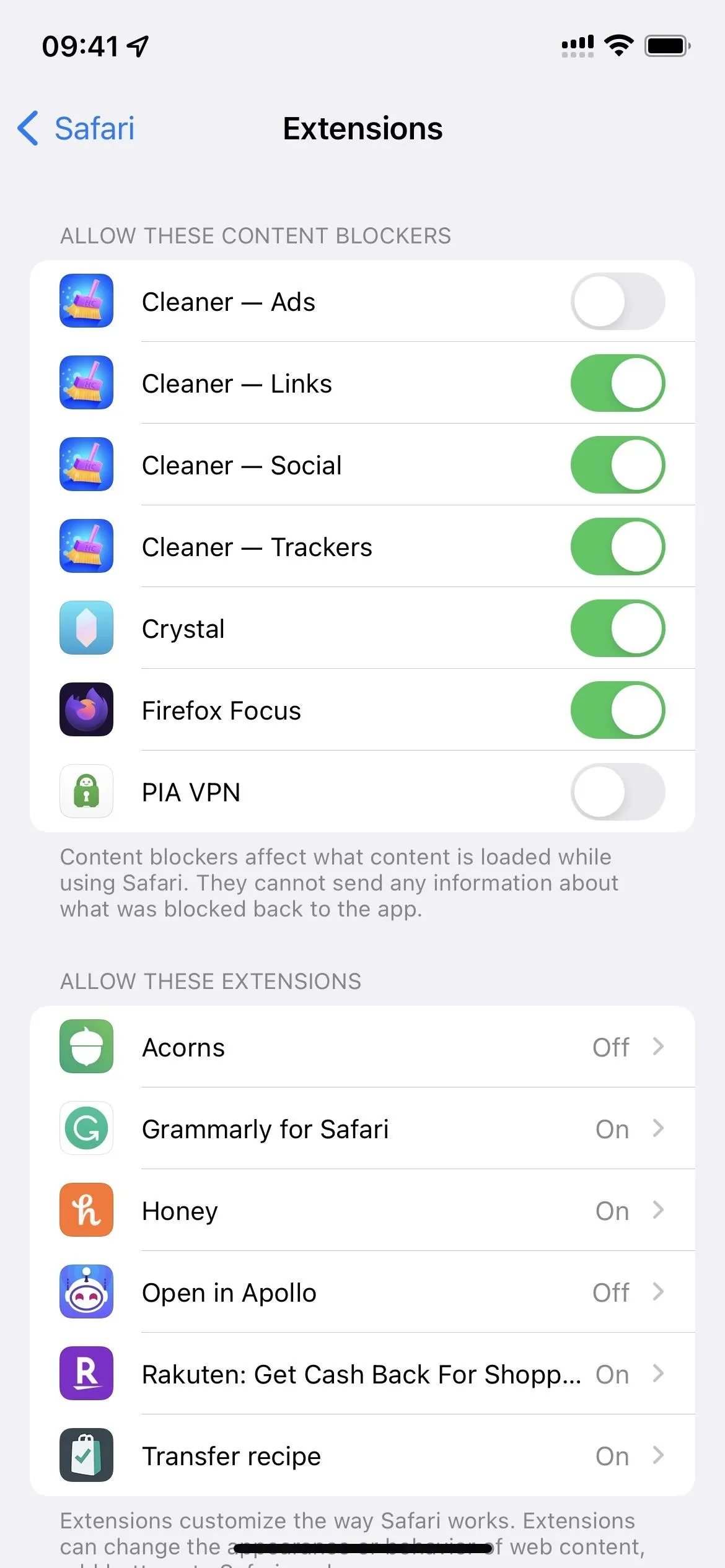
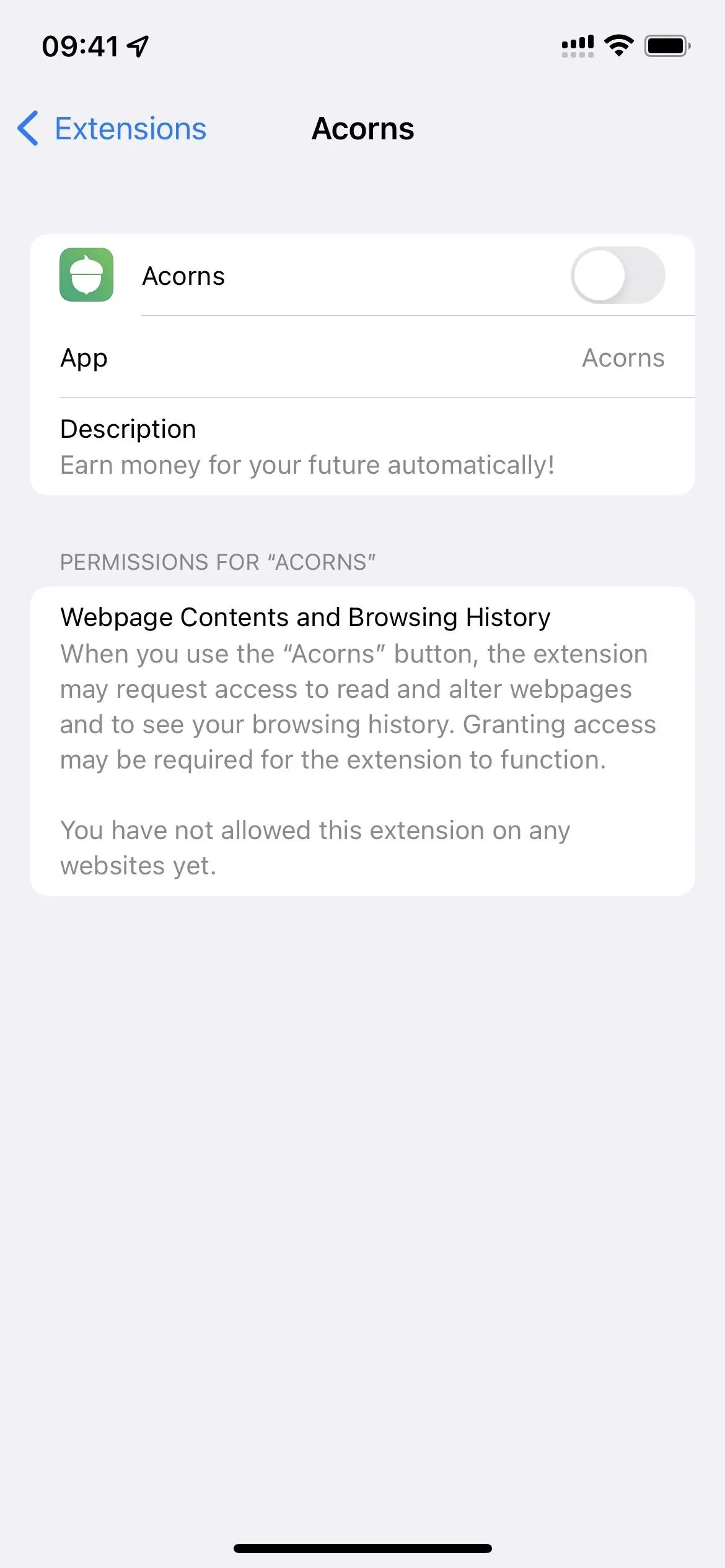



Second, you can do this from Safari itself. On any webpage, tap the "AA" icon in the search field (aka URL bar) to open the Page Settings menu. Tap "Turn on Content Blockers" or "Turn off Content Blockers" as needed for content blocking. This only affects the page your own, and it will reset to your defaults when it's refreshed. To make it stick, tap "Website Settings" from the Page Settings menu, then toggle on/off "Use Content Blockers" for that website.
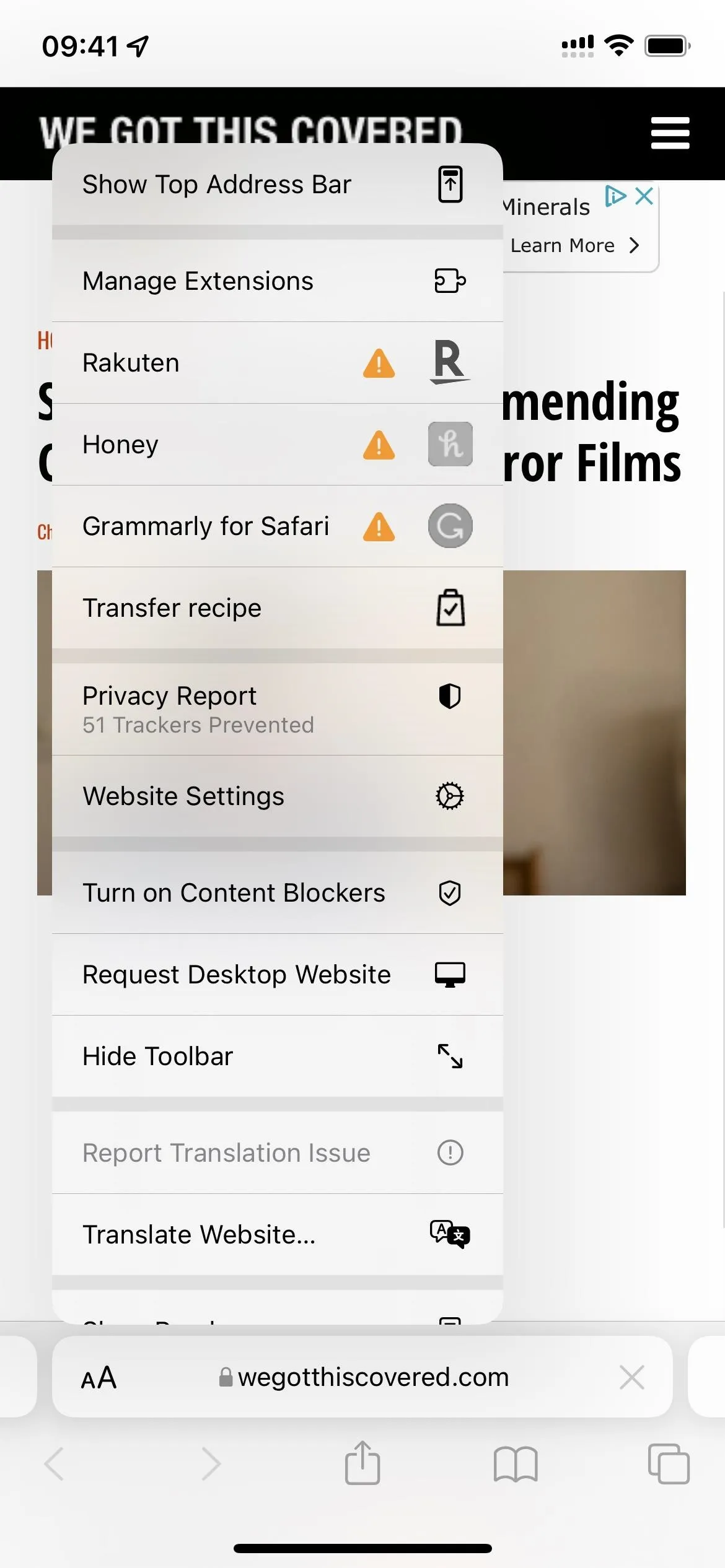



As for other types of extensions, from the "AA" Page Settings menu, tap "Manage Extensions," then toggle on or off the switch next to the extension you want. This applies Safari-wide, but you'll still have to give it permissions.




Assign Permissions to Safari Extensions
With the Safari Extensions enabled on your iPhone or iPad, you still have to give them the correct permissions. On a webpage in Safari where you'd like to use the extension, open the "AA" Page Settings menu, then you'll see the extension name in the extensions section if it's turned on.
If permissions are needed, you may see an exclamation symbol next to the extension. Tap the extension, then choose "Allow for One Day" or "Always Allow" on the prompt, or you can select "Don't Allow" if you never want that extension to work on that site.
You may also see a banner up top asking you to "Review" additional permissions requested; tap that to grant or deny the extension to the other sites listed.






Some extensions will ask you to give them permission to more than just the website you're on (e.g., for recent sites visited or your whole browsing history), so be careful if you see more than one URL in the prompt. You can always edit permissions later per website.
Extensions will all act differently depending on what they do. As you can see below for Rakuten, there's a little "R" button on the corner; tapping that shows me the cashback deal, and tapping the deal activates it and reloads the webpage with its tracking code added.
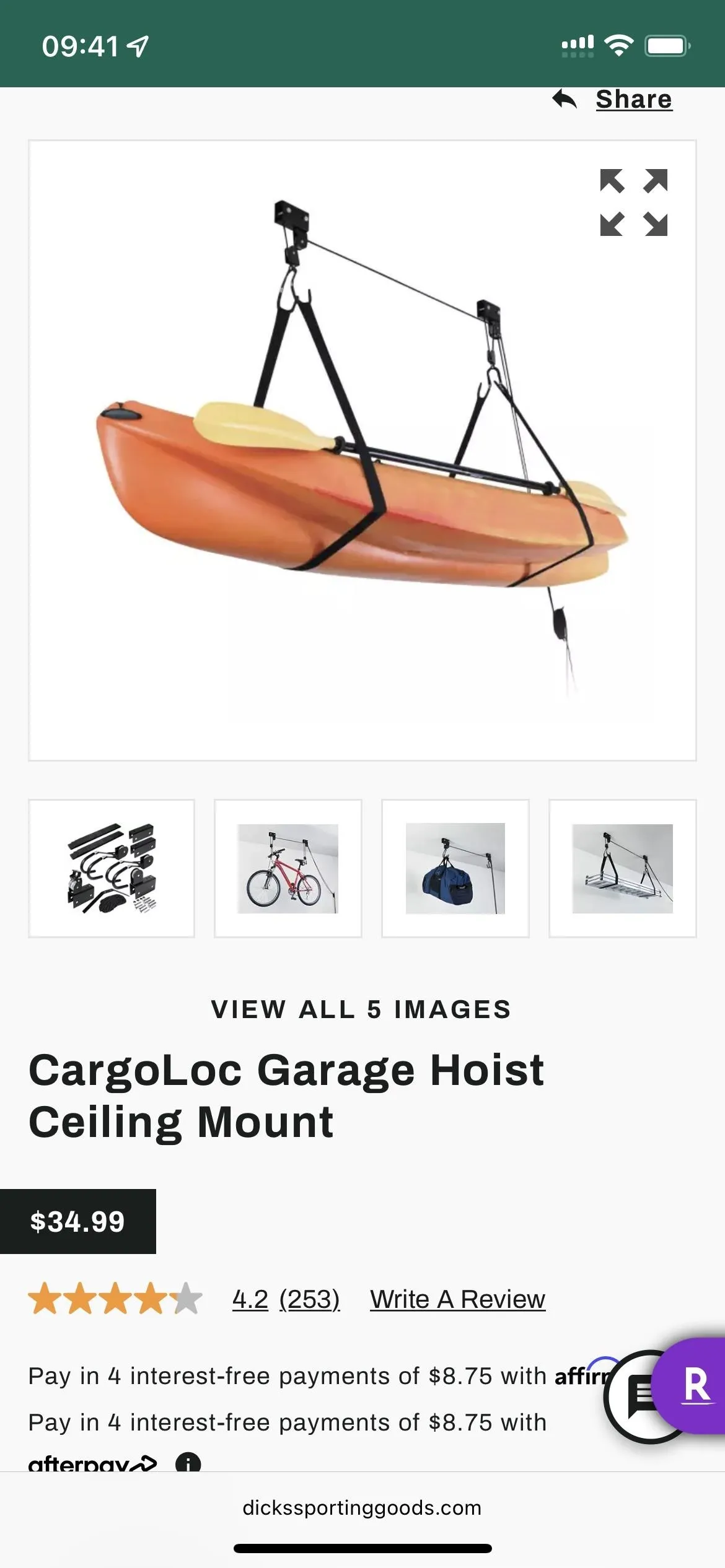



Manage Safari Extensions Per Site
As seen in the previous section, you can manage web extensions directly in Safari per website whenever you need or don't need them. You can also customize these from Settings –> Safari –> Extensions.
In the extension's details, you can toggle it on or off, and when it's on, you can see all of the permission you've given it below. In the "Webpage Contents and Browsing History" section, it will always show the websites you've allowed permission to always. Below that, every website it asked to get permissions for will show up separately, and you can change any of them from "Ask," "Deny," or "Allow."

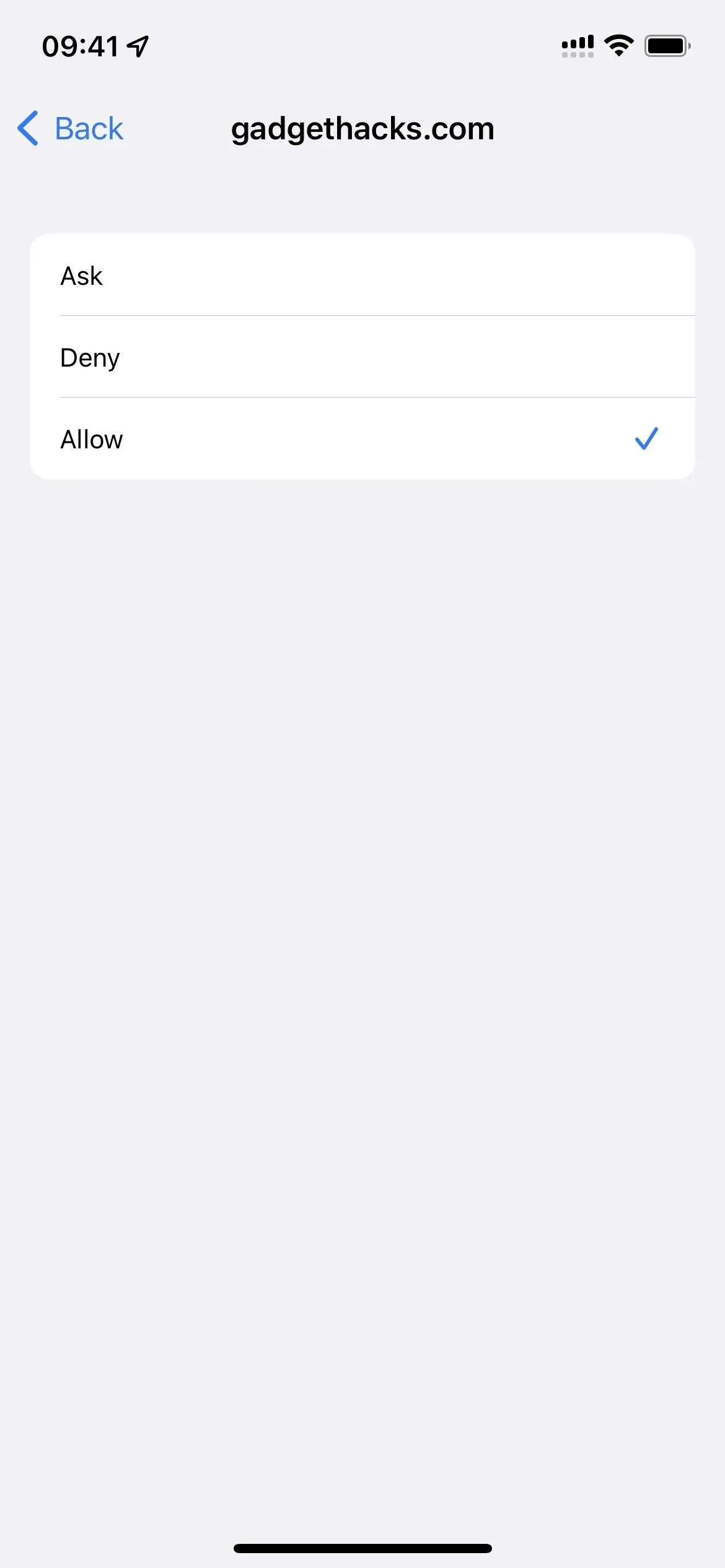


If you use "Ask," it will always ask you to "Allow for One Day," "Always Allow," or "Don't Allow." But "Deny" will deny permissions until you change the setting, while "Allow" will always allow them.
For all other websites, they default to "Ask," but you can set them to "Deny" or "Allow."

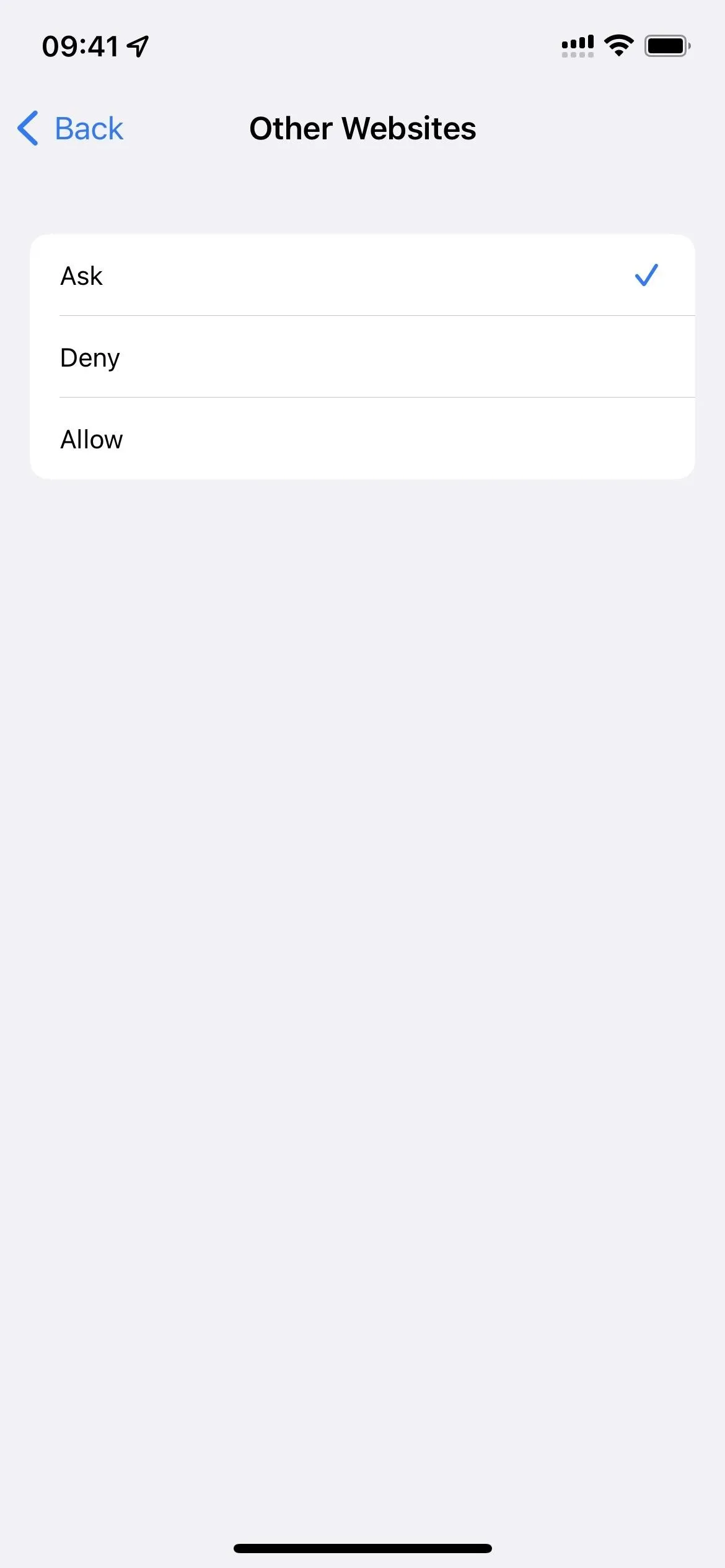


Toggling an extension off will still show all of the websites you've given "Allow" permission to here.
If you previously denied a website access to the extension and change your mind, you can change it in the Settings app as seen above, or you can do so on the website in Safari. You may see the "Review" button up top in the banner for an active extension; tap that to bring up the permission choices. If you don't see that, open up the Page Settings menu, tap the extension's name, and the permissions prompt will appear.






Know When Safari Extensions Are Active
When an extension is active on a website, you'll see the Safari Extension icon in the search field (URL bar). If you don't see that, an extension is not active, and you may see a banner up top for an extension asking for permissions to review for the webpage. You can also open the Page Settings menu on the website, and if the extension's icon is in color, it should be active.
When it comes to content blockers, the only way to tell is to see if it's on or off in the Page Settings menu.
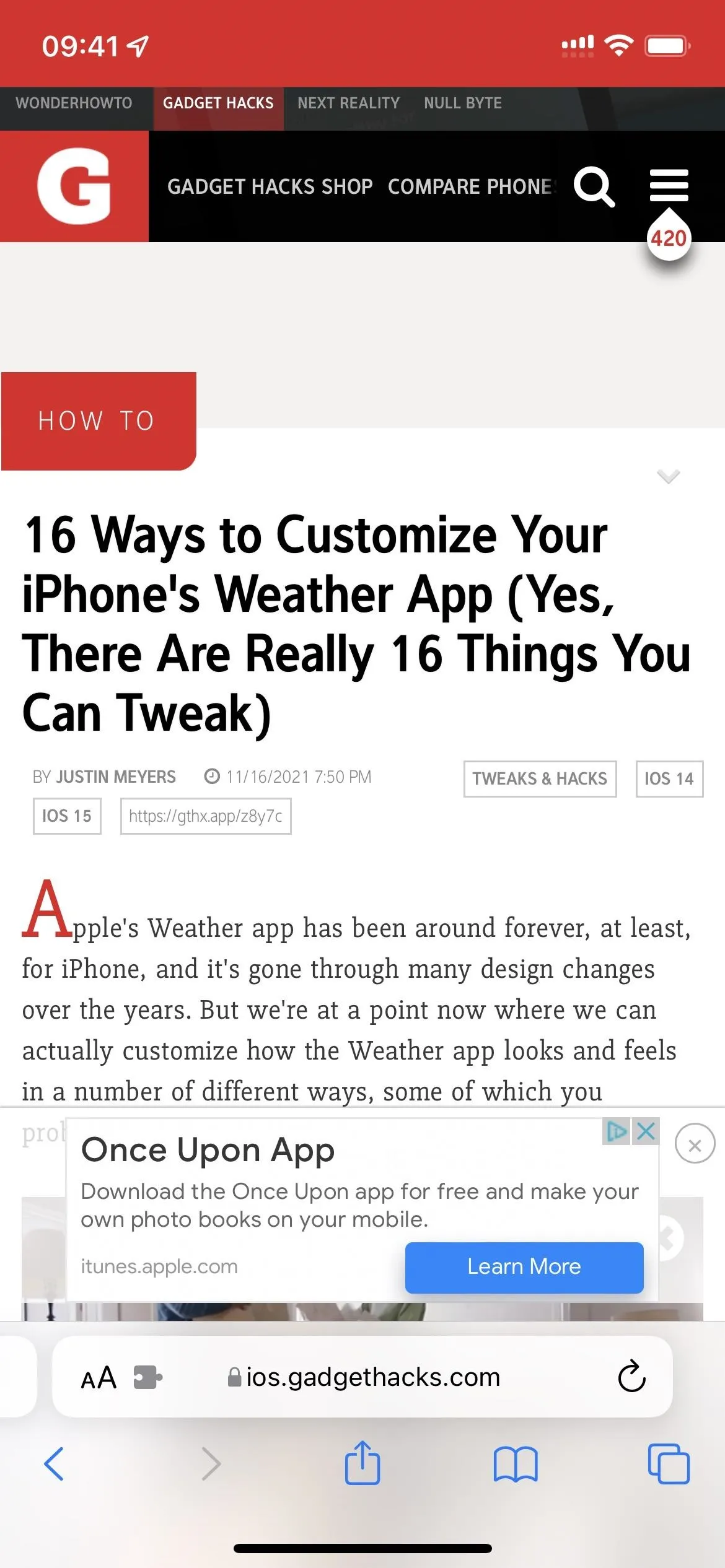
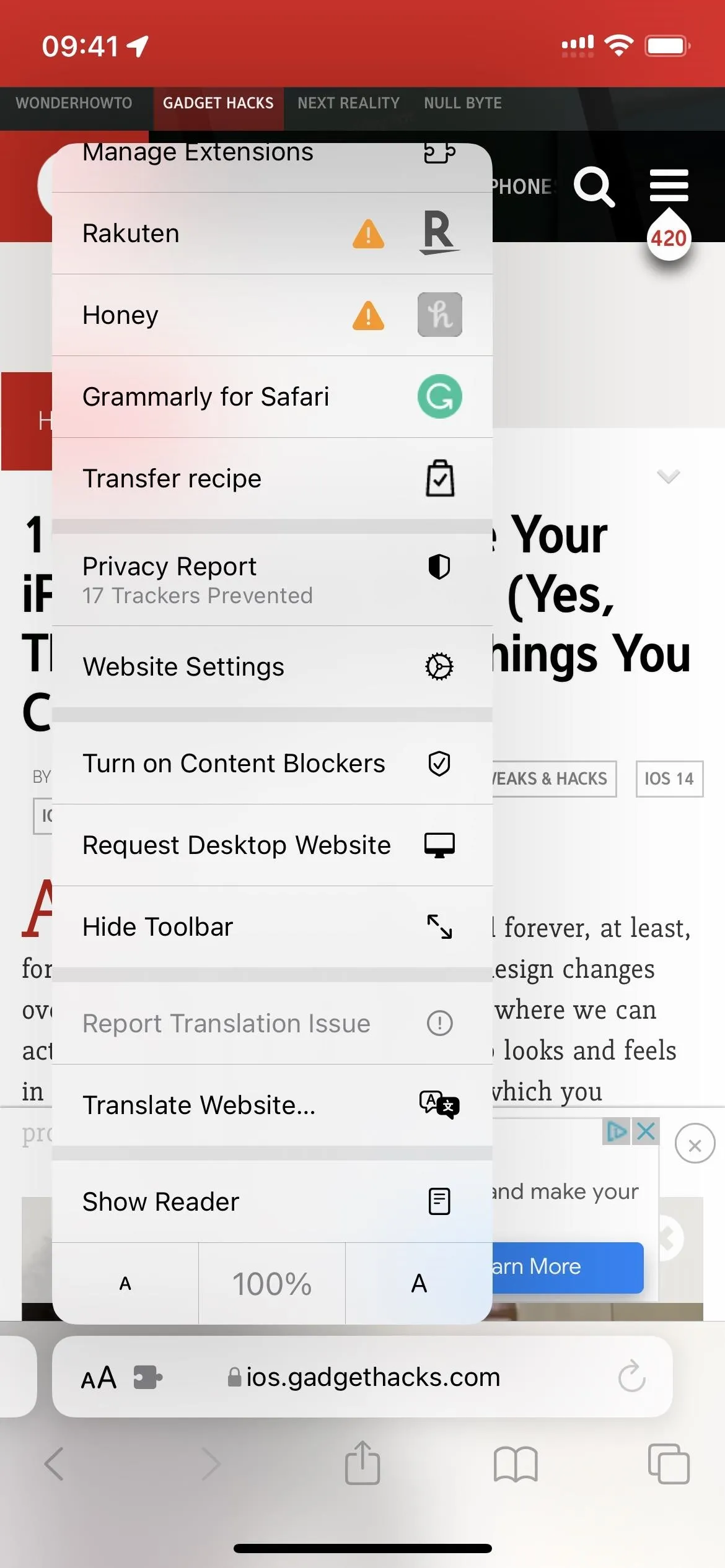


Delete Safari Extensions
If you no longer need an extension, you can delete its app like any other app on your iPhone or iPad. There is no way to delete the extension itself while keeping the app. Some apps may offer switches in their in-app settings, but we haven't seen that yet. So, if you need to keep the app, just disable the extension as seen above.
Cover photo and screenshots by Justin Meyers/Gadget Hacks
















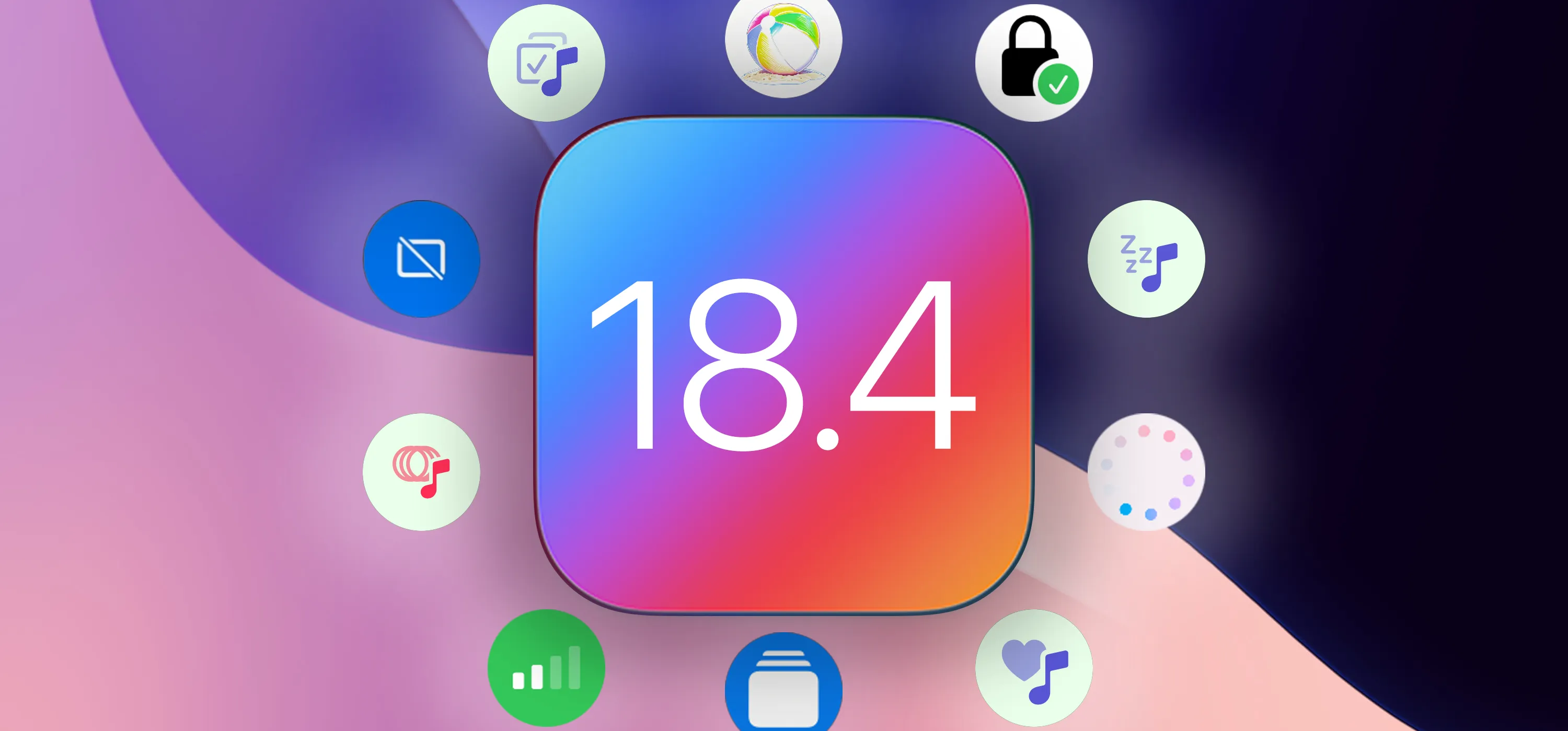





Comments
Be the first, drop a comment!